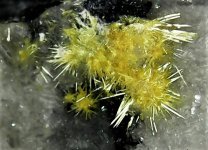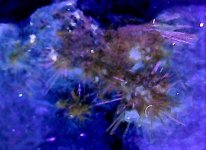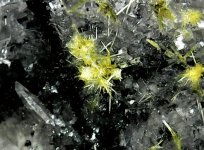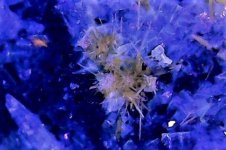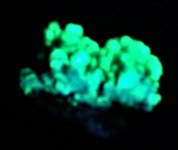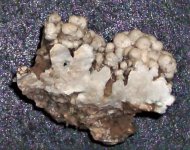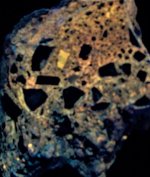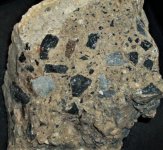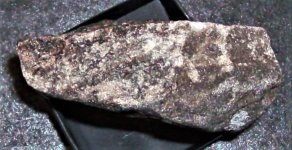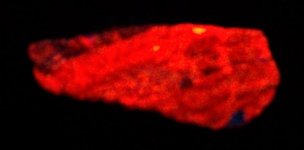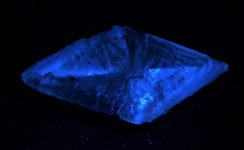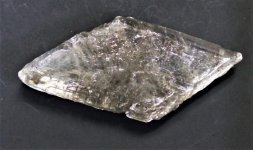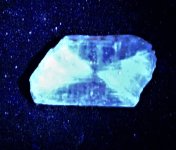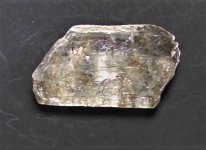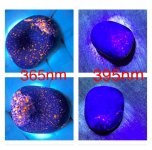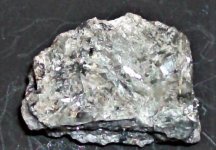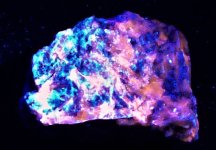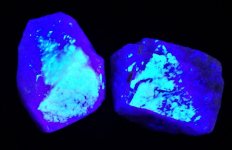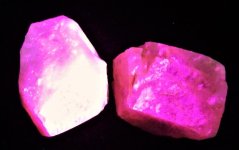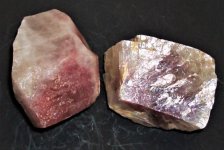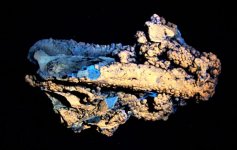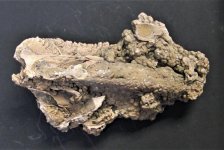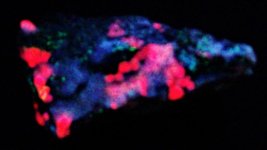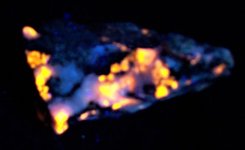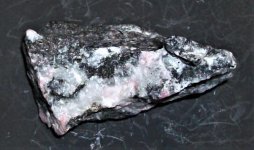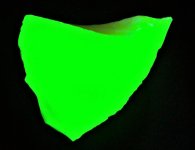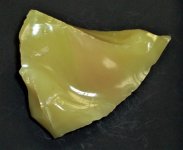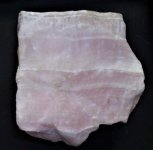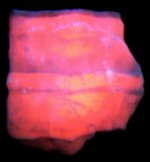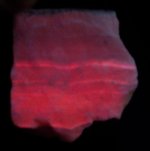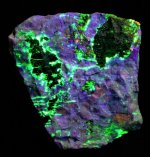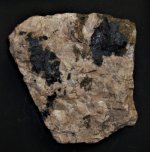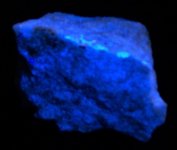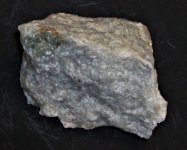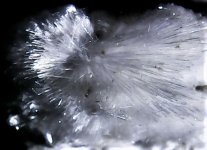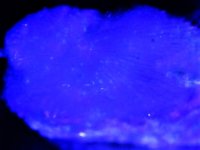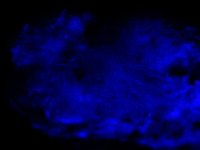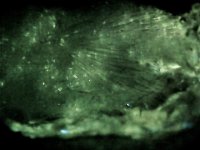Interesting specimen from Mexico!
This is a small specimen measuring only 1 3/8 inch in the photograph horizontally. It is smithsonite, zinc carbonate, from the Buena Terra Mine, Santa Eulalia, Chihuahua, Mexico. What is interesting is its color change in response to SW UV vs. LW UV. The first picture is natural light, showing its color as medium gray. Notice the small chip in the upper left hand corner of the specimen. The second picture shows the minerals UV response to SW 254 nm wavelength. The top surface is blue, and where it is chipped it is red. The third picture shows the minerals UV response to LW 365 nm wavelength. All the smithsonite is a strong orange color. According to what KT can find out, a trace of Fe is the activator element.
Enjoy the pics....sorry the 2nd pic is not in better focus, but that seems to be a problem related to KT's autofocus camera and the SW length band. Focus is a bit better in the 3rd picture.
This is a small specimen measuring only 1 3/8 inch in the photograph horizontally. It is smithsonite, zinc carbonate, from the Buena Terra Mine, Santa Eulalia, Chihuahua, Mexico. What is interesting is its color change in response to SW UV vs. LW UV. The first picture is natural light, showing its color as medium gray. Notice the small chip in the upper left hand corner of the specimen. The second picture shows the minerals UV response to SW 254 nm wavelength. The top surface is blue, and where it is chipped it is red. The third picture shows the minerals UV response to LW 365 nm wavelength. All the smithsonite is a strong orange color. According to what KT can find out, a trace of Fe is the activator element.
Enjoy the pics....sorry the 2nd pic is not in better focus, but that seems to be a problem related to KT's autofocus camera and the SW length band. Focus is a bit better in the 3rd picture.


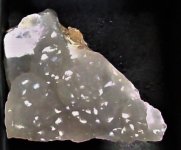
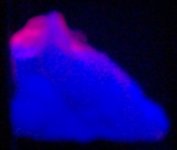
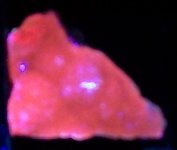
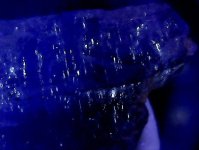
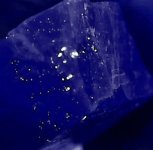
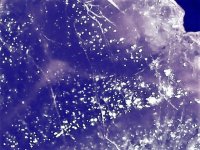
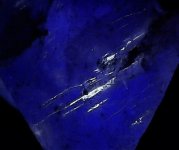
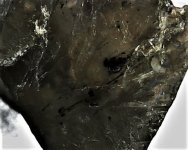

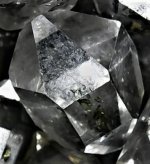
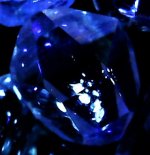
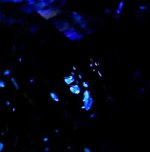
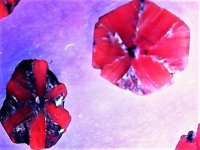
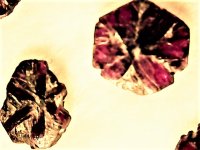
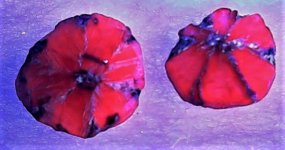
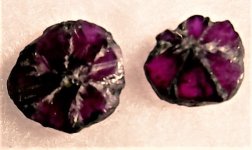
 as well as other projects and everyday chores), you are continuing to add quite an interesting assortment together, just wanted to at least do a quick post for now to let you know I saw and enjoyed looking at the latest additions
as well as other projects and everyday chores), you are continuing to add quite an interesting assortment together, just wanted to at least do a quick post for now to let you know I saw and enjoyed looking at the latest additions 
